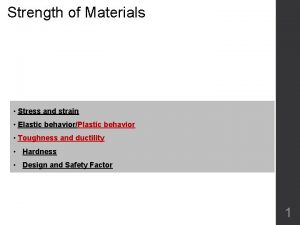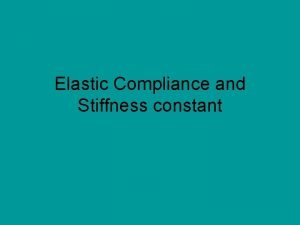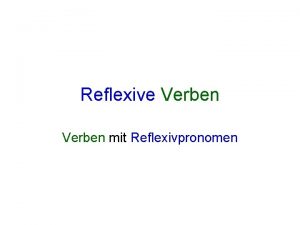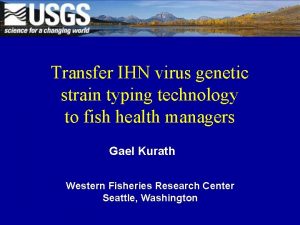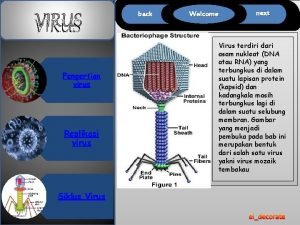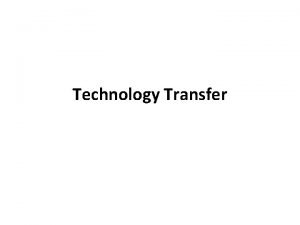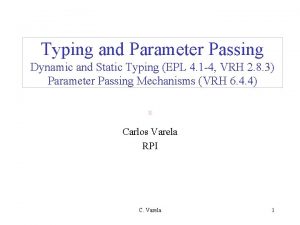Transfer IHN virus genetic strain typing technology to












- Slides: 12

Transfer IHN virus genetic strain typing technology to fish health managers Gael Kurath Western Fisheries Research Center Seattle, Washington

Fish Disease as a limiting factor in the Columbia River basin : IHN • Steelhead juveniles - frequent outbreaks • Steelhead and chinook adult carriers • Recently IHNV in chinook juveniles and coho • Outbreaks in E. S. A. listed stocks: 1995 Lookingglass chinook smolts 2002 Sawtooth chinook juveniles 2002 Bonneville Redfish Lake sockeye

IHNV Genetic Typing Method Mid-G nucleotide sequencing 303 nt Viral RNA ~11, 000 nt 3’ N P M G NV . . . AACATGGTCTTCGAGCTC. . . AACATCCTCTTCGAGCCC. . . AACATGGTCTACGAGCCC. . . L 5’

IHNV Phylogeny R 6 RBdn 3 A 16 AWn 3 A 40 W 11 n 37 A 20 A 21 Wn 2 A 22 A 41 W 15 n 2 W 18 n 3 A 26 n 2 W 21 W 1 n 2 W 57 Bk Bl W 80 n 2 W 83 A 12 ABn 6 Jp A 13 A 42 R 24 R 39 R 42 Wn 3 A 30 A 38 n 2 A 34 W 19 ABWn 26 LR 73 Rns W 10 A 23 Wn 5 Bsn 3 W 68 W 76 R 7 RB 1 WRSOCn 26 RB 76 S 29 O 99 U clade 180 88 FF 11 FF 12 FF 14 FF 7 n 2 FF 85 FF 17 FF 18 FF 19 n 2 S 49_ FF 86 FF 88 85 80 C 9 COn 4 C 2 FF 136 n 3 FF 114 n 2 FF 104 FF 177 FF 178 FF 25 n 2 FF 35 n 2 FF 4 n 3 S 21 FF 6 FF 3 n 2 FF 5 n 2 R 3 RWn 3 R 5 FF 10 n 3 99 FF 191 CST WRACFFn 6 193110 FRref FF 51 ITref LR 80 RSn 9 S 20 p. FF 90 FF 52 HO 7 FF 84 RBr FF 53 C 11 n 7 C 13 n 8 C 10 n 7 C 25 C 1 p. On 2 C 7 n 2 Col 80 Col 85 84 71 80 85 FF 152 SRCV C 18 77 0. 005 substitutions/site L clade 36 PAUP 4. 0 b, Neighbor-Joining, bootstrap 1000 M clade 107

Distribution of U and M clade IHNV in the Basin

IHNV Strain Typing at WFRC: Epidemiology Reports • Provided 18 reports to fish health managers since 1997 • Increasing demand in CRB: 2001 – 2002, nine reports involving 89 IHNV isolates • Management Agencies served: WDFW, ODFW, IDFG, USFWS

Objectives 1. Continue to provide IHNV strain typing on a case-by-case basis at WFRC for the next two years 2. Conduct focus studies of IHNV epidemiology at specific sites of interest in the Columbia River basin. 3. Transfer IHNV genetic strain typing technology to management agency fish health laboratories. 4. Develop and implement a web-accessible IHNV database.

Objective 1: Continue to provide IHNV strain typing on a case-by-case basis at WFRC for the next two years USFWS Susan Gutenberger Ray Brunson Kathy Clemens We anticipate several requests for analyses of multiple virus isolates as unusual IHNV situations or outbreaks arise ODFW Mark Engelking John Kaufman Warren Groberg Sam Onjukka WDFW IDFG Joan Thomas Larry Durham Keith Johnson

Objective 2: Conduct focus studies of IHNV epidemiology at specific sites of interest in the Columbia River basin.

Objective 3. Technology transfer of IHNV genetic strain typing methods to management agency fish health laboratories. Training sessions for fish health workers from agency laboratories -processing of IHNV samples for sequencing -analysis of data to identify virus clade and type -comparison with IHNV database for epidemiology insights Equipment and start-up supply kits for client labs Computers and software for client labs Operations costs for client labs WFRC project manager continues in an advisory role to ensure success of technology transfer to client labs

Objective 4. Develop and implement a web-accessible IHNV database. • Ongoing source of all IHNV strain typing data to date 83 R 6 RBdn 3 A 16 AWn 3 A 40 W 11 n 37 A 21 Wn 2 A 20 A 22 A 41 W 15 n 2 W 18 n 3 A 26 n 2 W 21 W 1 n 2 W 57 Bk Bonneville H. sockeye ‘ 02 & adult fall chinook ‘ 01 W 83 A 12 ABn 6 Jp A 13 A 42 R 24 R 39 R 42 Wn 3 A 30 A 34 A 38 n 2 W 19 ABWn 26 LR 73 Rns W 10 A 23 Wn 5 Bsn 3 W 68 W 76 R 7 RB 76 RB 1 WRSOCn 26 S 29 O 99 • Open access to all fish health managers and the public 88 • Facilitates placing virus types in context with epidemiology FF 136 n 3 FF 86 FF 152 FF 88 FF 104 FF 178 FF 177 FF 25 n 2 FF 35 n 2 FF 4 n 3 FF 21 S 21 FF 6 FF 3 n 2 FF 5 n 2 R 3 RWn 3 R 5 FRref FF 51 ITref LR 80 RSn 9 S 20 p. FF 90 FF 52 HO 7 FF 84 RBr 80 85 C 9 COn 4 C 2 FF 114 n 2 82 M 84 71 Tanner Creek steelhead ‘ 02 CST 99193110 WRACFFn 6 80 • Searchable by fields (e. g. host species, years) FF 11 FF 12 FF 14 FF 7 n 2 FF 2 FF 85 FF 17 FF 18 FF 19 n 2 S 49_ U SRCV C 18 FF 53 C 11 n 7 77 C 10 n 7 C 13 n 8 C 1 p. On 2 C 25 Col 80 C 7 n 2 Col 85 0. 005 substitutions/site PAUP 4. 0 b, Neighbor-Joining, bootstrap 1000

Ultimate Value Provide fish health agency laboratories throughout the basin with new capability and tools to generate data for sound management decisions regarding IHNV. Improve hatchery practices to reduce IHN Identify sources of epidemics at individual facilities Assess risks of fish stock transfers Arrest the spread of the M clade in the Columbia River basin Establish technology for other pathogens in the future
 Elastic strain and plastic strain
Elastic strain and plastic strain Compliance and stiffness
Compliance and stiffness Genetic drift
Genetic drift Genetic programming vs genetic algorithm
Genetic programming vs genetic algorithm Genetic programming vs genetic algorithm
Genetic programming vs genetic algorithm What is the difference between genetic drift and gene flow
What is the difference between genetic drift and gene flow Genetic drift vs genetic flow
Genetic drift vs genetic flow Tyska prepositioner
Tyska prepositioner Serisen
Serisen Thomas ihn
Thomas ihn Durch ihn und mit ihm und in ihm
Durch ihn und mit ihm und in ihm Columbia ihn
Columbia ihn Reflexive verben im perfekt
Reflexive verben im perfekt
